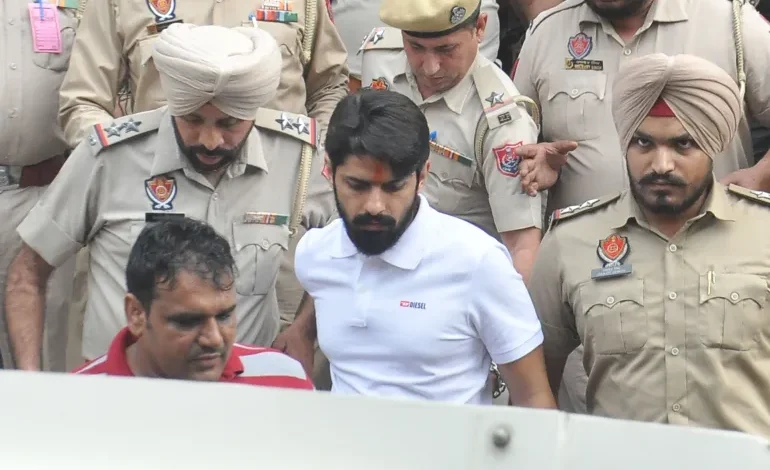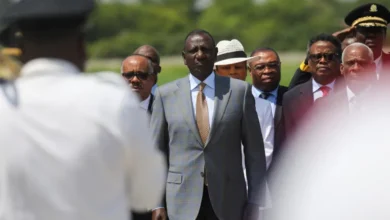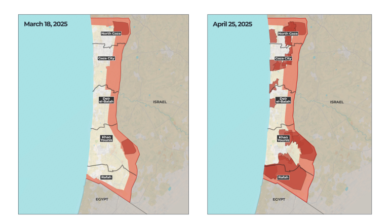Who is Lawrence Bishnoi, the gangster at the centre of India-Canada spat?

India-Canada bilateral relations touched a historic low this week when both countries expelled six diplomats each, in tit-for-tat moves, after Ottawa doubled down on its accusation that the Indian government masterminded the 2023 murder of a prominent Sikh separatist leader.
While levelling serious conspiracy charges against India’s senior-most diplomats in Ottawa, the Canadian officials dropped another bombshell allegation — linking the diplomatic mission with India’s most notorious crime syndicate boss, Lawrence Bishnoi.
Canada’s Royal Canadian Mounted Police (RCMP), which has been investigating the killing of Sikh separatist leader Hardeep Singh Nijjar, blamed the “Bishnoi group” for carrying out hit jobs at the behest of the Indian government’s external spy agency, the Research and Analysis Wing (RAW).
Bishnoi is currently imprisoned in Indian Prime Minister Narendra Modi’s home state of Gujarat — in the Sabarmati Central Jail in Ahmedabad — ruled by his Bharatiya Janata Party (BJP).
So, who is Lawrence Bishnoi? How does he continue to run his crime syndicate from behind bars? And how does a gangster fit into a serious geopolitical crisis between two democracies with deep historical ties?
From a Punjab village to Mumbai
Bishnoi, 31, first captured national attention when he was linked with the killing of hip-hop icon, Punjabi rapper Sidhu Moose Wala, on May 29, 2022. Moose Wala was also a member of India’s opposition party, Congress. Bishnoi’s associates claimed responsibility for the murder as part of an intergang rivalry.
More recently, Bishnoi’s gang claimed responsibility for the murder of a 66-year-old Muslim politician, Baba Siddique, in Mumbai’s posh Bandra area last weekend.
Siddique was a three-time legislator and former minister in the Maharashtra state government. He was widely known for his closeness with Bollywood celebrities, most notably with actor Salman Khan.
“We do not have any enmity with anyone but whoever helps Salman Khan … keep your accounts in order,” noted a purported Facebook post by an associate of Bishnoi, claiming responsibility for Siddique’s killing.
Bishnoi’s feud with Khan goes back nearly 26 years over the actor’s killing of two antelopes on a recreational hunting trip in Rajasthan while shooting a film in the western state in 1998. The Bishnoi religious sect considers the species sacred.
In April this year, two members of the gang were arrested for firing at Khan’s home in Mumbai.
“For gangsters, it is all in the name — and the fear of that name,” Jupinderjit Singh, author of Who Killed Moosewala?, who has traced gang wars in north India for nearly a decade, told Al Jazeera.
“Lawrence often says, ‘Bada kaam karna hai [I have to do something big]’. Earlier, the ‘big job’ was murdering Moose Wala, then attacking Salman Khan, and now Siddique,” said Singh. “These attacks add brand value to his name and multiply the extortion and ransom amount” the gang can demand.
His alleged collusion with the Indian government to assassinate Sikh separatists in Canada is eventually proven or not, Canadian officials — by naming Bishnoi’s gang — have already delivered a PR victory for them, Singh said,
“Eventually, the winner is Lawrence here. He is getting the name he has yearned for,” the author said.
The ‘I’m something’ syndrome
Born in 1993, near the Pakistan border in India’s Sikh-majority Punjab state, Lawrence Bishnoi was “exceptionally fair, nearly a pinkish complexion, and almost European rather than Indian”, according to his mother, Sunita, a graduate-turned-homemaker, as she told author Singh during their interactions for his research.
Hence, the name, Lawrence — uncommon among the Bishnoi community in north India — which was inspired by British educationist and administrator Henry Lawrence, who was stationed in Punjab during the colonial era.
Bishnoi’s family was well-off and owned more than 100 acres (40 hectares) of farming land in Punjab’s Duttaranwali village. After high school, Bishnoi went to Chandigarh, the state’s capital, to study law.
There, at DAV College, he stepped into student politics and allegedly ventured into the criminal world by locking horns with rival student groups. Bishnoi served as the president of the college’s student body. He was arrested over charges of arson and attempt to murder and sent to a jail in Chandigarh, where he reportedly came under the influence of other imprisoned gangsters.
In Punjab, it is a common phenomenon that the gangsters come from “well-off, good families”, said Singh, the author who has also tracked Bishnoi’s rise since his college days. “All of them suffer from a syndrome: ‘I’m something’,” he added.
However, when they move to cities and face “an elite, intellectual crowd, they realise they are not landlords any more”, says Singh. For many of them, crime becomes an answer to reaffirm their faith in themselves, he adds.
Among his young followers, Bishnoi is highly revered as “a man of principle”, said a senior police officer, requesting anonymity, in Rajasthan, where the Bishnoi gang has recruited members. “He positions himself as this righteous bachelor, a celibate, often signing off with remarks like “Jai Shri Ram (Hail Lord Ram)”, a Hindu right-wing war cry.
Bishnoi has been shuffling between prisons for more than a decade now but has still extended his crime syndicate to the national capital, New Delhi, and neighbouring states, and fought turf wars with rival gangs in Uttar Pradesh, Rajasthan and Punjab. He is known to have active associates across Canada and the United States.
“With Siddique’s killing, he is aiming to place himself in Mumbai’s feared underworld now,” the police officer told Al Jazeera.










